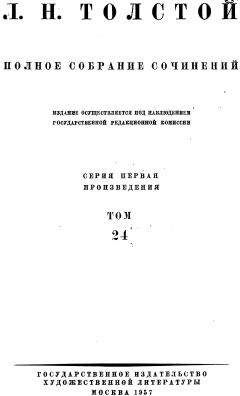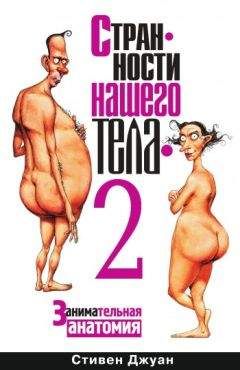59
K. Nishiwaki et al., ‘The experimental humanoid robot H7: A research platform for autonomous behaviour’, Philosophical Transactions of the Royal Society A: Mathematical, Physical and Engineering Sciences, 2007, vol. 365 (1850), pp. 79—107.
Dr Alain Cardon is from the Laboratory of Information of Paris.
A. Cardon, Artifi cial consciousness, artifi cial emotions, and autonomous robots’, Cognitive Processes, 2006, vol. 7, no. 4, pp. 245–267.
R. Kurzweil, ‘Robots R Us’, Popular Science, September 2006, pp. 52–71.
S. Juan, ‘Will robots ever become just like humans?’, The Register, 23 December 2006.
S. Juan, ‘How old is my body if the cells keep renewing themselves?’, The Register, 17 February 2007.
Dr Michael Onken is from the Department of Ophthalmology and Visual Sciences at Washington University in St Louis.
Personal communication, 2 February 2006.
Dr Barbara Sakakian is from the Department of Psychiatry at the School of Clinical Medicine of Cambridge University.
Personal communication, 7 February 2006.
Dr Aubrey de Grey is from the Interdisciplinary Research Centre on Aging at Cambridge University.
G. Lawton, ‘The incredibles’, New Scientist, 15 May 2006, pp. 32–38.
S. Juan, ‘Is the human skull made up of one bone or two?’, The Register, 20 January 2007.
Drs A. Czaplinski, A. Steck and P. Fuhr are from the Neurology Clinic of the University of Bazylei in Szwajacaria, Poland.
A. Czaplinski, A. Steck and P. Fuhr, ‘Tic syndrome’, Neurologia neurochirurgia polska, 2002, vol. 36, no. 3, pp. 493–504.
Dr Alumit Ishai is from the Institute of Neuroradiology at the University of Zurich in Switzerland.
A. Ishai, ‘Sex, beauty and the orbitofrontal cortex’, International Journal of Psychophysiology, 2007, vol. 63, no. 2, pp. 181–185.
Dr David Perrett is a cognitive psychologist at the University of St Andrews in Scotland.
D. Perrett, K. Lee, I. Penton-Voak, D. Rowland, S. Yosikawa, D. Burt, S. Henzi, D. Castles and S. Akamatsu, ‘Eff ects of sexual dimorphism on facial expression’, Nature, 1998, vol. 394 (6696), pp. 884–887.
S.Juan, ‘Why is it that we find some faces so attractive and not others?’, National Post, 19 April 2007, pp. 1–2.
A. Aron, H. Fisher, D. Mashek, G. Strong, H. Li and L. Brown, ‘Reward, motivation and emotion systems associated with early-stage intense romantic love’, Neurophysiology, 2005, vol. 94, no. 1, pp. 327–337.
H. Fisher, A. Aron and L. Brown, ‘Romantic love: A mammalian brain system for mate choice’, Philosophical Transactions of the Royal Society B: Biological Sciences, 2006, vol. 361 (1476), pp. 2173–2186.
S.Juan, ‘Great moments in human research’, The Register, 27 January 2007.
S.Juan, ‘Great moments in human research’, The Register, 27 January 2007.
Drs J.R. Meloy and H. Fisher are from the Department of Psychiatry of the University of California at San Diego.
J. Meloy and H. Fisher, ‘Some thoughts on the neurobiology of stalking’, Journal of Forensic Sciences, 1995, vol. 50, no. 6, pp. 1472–1480.
Dr N.C. Heglund is from the Catholic University of Louvain in Belgium.
J. Varasdi, Myth Information: More than 590 Popular Misconceptions, Fallacies and Misbeliefs Explained, Ballantine, New York, 1996, p. 122
J. Rains and F. Taylor, Chronic Daily Headache: An Overview, American Council for Headache Education, Mount Royal, New Jersey, 2006.
Mayo Clinic, Thunderclap Headaches, Mayo Clinic Foundation for Medical Education, Rochester, Minnesota, 24 May 2005.
S. Juan, Aching heads’, National Post, 10 April 2006, p. 1.
Mayo Clinic, Ice Cream Headaches, Mayo Clinic Foundation for Medical Education, Rochester, Minnesota, 24 May 2006.
S.Juan, ‘What is a brain freeze?’, The Register, 16June 2006.
Johns Hopkins Medicine, Health Information Library: MSG Headaches, Johns Hopkins Health Information Service, Baltimore, Maryland, 24 May 2006.
S.Juan, ‘What is a Chinese restaurant headache?’, The Register, 16 June 2006.
S. Juan, ‘Why doesn’t a hangover occur the night before?’, The Register, 28 July 2006.
S. Juan, ‘Your head will hurt tomorrow’, National Post, 13 November 2006, p. 1.
H. Moore, Avoiding post-lumbar puncture headaches’, Pulmonary Reviews, 2000, vol. 5, no. 12, pp. 1–7.
Dr R. Gaiser is from the Department of Anesthesiology at the University of Pennsylvania.
R. Gaiser, ‘Postdural puncture headache’, Current Opinion in Anesthesiology, 2006, vol. 19, no. 3, pp. 249–253.
Dr C.L. Wu is from the Department of Anesthesiology at Johns Hopkins University.
C. Wu, A. Rowlingson, S. Cohen, R. Michaels, G. Courpas, E.Joe and S. Liu, ‘Gender and postdural puncture headache’, Anesthesiology, 2006, vol. 105, no. 3, pp. 613–618.
S. Juan, ‘What is a post-lumbar headache?’, The Register, 27 October 2006.
Dr Andrew Lloyd is an infectious disease physician in Sydney, Australia.
Personal communication, 29 August 2006.
Dr J.D. Grabenstein is from the US Offi ce of the Surgeon General.
J. Grabenstein, P. Pitman, J. Greenwood and R. Engler, ‘Immunization to protect the US Armed Forces: Heritage, current practice, and prospects’, Epidemiologic Reviews, 2006, vol. 28, no. 1, pp. 3—26.
Dr A. Prysyazhnyuk is from the Research Centre for Radiation Medicine of AMS of the Ukraine in Kiev.
A. Prysyazhnyuk, V. Gristchenko, Z. Fedorenko, L. Gulak, M. Fuzik, K. Slipenyuk and M. Tirmarche, ‘Twenty years after the Chernobyl accident: Solid cancer incidence in various groups of the Ukrainian population’, Radiation and Environmental Biophysics, 2007, vol. 46, no. 1, pp. 43–51.
Drs R.A. Schwartz, C.A. Janusz and C.K. Janniger are from the University of Medicine and Dentistry at the New Jersey Medical School in Newark.
R.A. Schwartz et al., ‘Seborrheic dermatitis: An overview”, American Family Physician, 2006, vol. 74, no. 1, pp. 125–130.
Dr Brent Archinal is from the Astrogeology Team of the US Geological Survey in Flagstaff, Arizona.
B. Archinal, How far can you see?’, Astronomy, May 1997, p. 20.
J. Apt, ‘Orbit, the astronauts’ view of home’, National Geographic, November 1996, pp. 8—27.
D. Fisk and R. Brown, ‘Chinese puzzle’, New Scientist, 15 July 1995, p. 65.
S. Juan, How far can the naked eye see?’, The Register, 1 December 2006.
S. Juan, Can the Great Wall be seen from the moon?’, Epoch Times, 29 November 2006.
S. Juan, ‘Can you really see the Great Wall of China from the Moon?’, The Register, 1 December 2006.
Dr Samuel Salamon is from the Cataract Eye Centre of Cleveland, Ohio.
S. Juan, ‘Why do babies blink less often than adults?’, The Register, 30 June 2006.
D.M. Stein, G. Wollstein, H. Ishikawa, E. Hertzmark, R. Noecker and J. Schuman are from the Department of Ophthalmology at the School of Medicine at the University of Pittsburgh.
D. Stein et al., Effect of corneal drying on optical coherence tomography’, Ophthalmology, 2006, vol. 113, no. 6, pp. 985—91.
Dr Stephen Miller is the Director of the Clinical Care Centre of the American Optometric Association in St Louis.
Personal communication, 23 August 2006.
Drs N.S. Logan, L. Davies, E. Mallen and B. Gilmartin are from the Human Myopia Research Centre at Aston University in Birmingham, UK.
N. Logan et al., Ametropia and ocular biometry in a UK university student population’, Optometry and Vision Science, 2005, vol. 82, no. 4, pp. 261–266.
S. Juan, Why are so many humans near sighted?’, The Register, 22 September 2006.
S. Juan, ‘How does a cross-eyed person’s view differ from others?’, The Register, 6 October 2006.
Dr Michael Lawless of the Department of Ophthalmology at the Royal North Shore Hospital in Sydney, Australia.
Personal communication, 26 August 2006.
Drs M.A. Bullimore, K. Reuter, L.Jones, G. Mitchell, J. Zoz and M. Rah are from the Ohio State University College of Optometry in Columbus.
M. Bullimore et al., ‘The study of progression of adult nearsightedness (SPAN): Design and baseline characteristics’, Optometry and Vision Science, 2006, vol. 83, no. 8, pp. 594–604.
Dr Armand Tanguay Jr is a professor of electrical engineering at the University of Southern California.
M. Stroh, ‘We see the future better than 20/20’, Popular Science, June 2005, p. 59.
S. Juan, ‘Is an artificial eye close to reality?’, The Register, 24 November 2006.
‘Blind person sees colour with touch only”, Dominican Today (Santo Domingo), 17 November 2005, p. 1.
S. Juan, ‘Can the blind feel colours’, Epoch Times, 15 November 2006, p. 11.
D. Simons, ‘Attentional capture and inattentional blindness’, Trends in Cognitive Sciences, 2000, vol. 4, no. 4, pp. 147–155.
Drs S.B. Most, B. School, E. Cliff ord and D. Simons are from the Department of Psychology at Harvard University.
S. Most et al., ‘What you see is what you set: Sustained inattentional blindness and the capture of awareness’, Psychological Review, 2005, vol. 112, pp. 217—42.
Drs Mika Koivisto and Antti Revonsuo are from the Centre for Cognitive Neuroscience at the University of Turku in Finland.
M. Koivisto and A. Revonsuo, ‘The role of unattended distracters in sustained inattentional blindness’, Psychological Research, 2008, vol. 72, no. 1, pp. 39–48, Epub 5 July 2006.
S.Juan, ‘When is seeing not seeing?’, The Register, 19 January 2006.
Dr Kenton McWilliams is from the School of Optometry at the University of Missouri in St Louis.
Personal communication, 18 May 2006.
R. Williams and W. Madil, ‘Goggle eyed’, New Scientist, 17 June 2000, p. 65.
Dr Anna Gislen is from Lund University in Sweden.
A. Gislen and L. Gislen, ‘On the optical theory of underwater vision in humans’, Journal of the Optical Society of America A: Optics, Image Science, and Vision, 2004, vol. 21, no. 11, pp. 2061–2064.
A. Gislen, E. Warrant, M. Dacke and R. Kroeger, ‘Visual training improves underwater vision in children’, Vision, 2006, vol. 46, no. 20, pp. 3443–3450.
J. Travis, ‘The eyes have it’, Science News, 17 May 2003, p. 308.
E. Aserinsky and N. Kleitman, ‘Regularly occurring periods of eye motility, and concomitant phenomena, during sleep’, Science, 1953, vol. 118 (3062), pp. 273–274.




